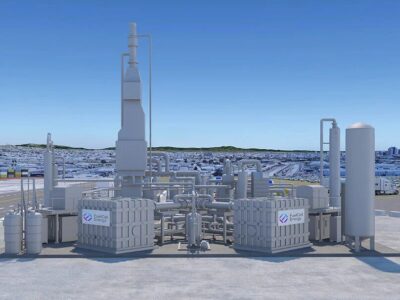(Bloomberg) —
The Electric Reliability Council of Texas is changing its requirements for declaring emergencies, making it easier to take action to keep the grid stable. In some cases, the shift will also mean implementing rotating outages earlier than before.
The new protocols will apply to both minimum power reserve requirements and to maintaining frequency levels, Ercot, as the operator of the state grid is known, said in a statement Wednesday,
Read More: Texas Teeters on Edge of Blackouts as Demand Squeezes Grid
Texas is facing increasing challenges when it comes to maintaining a reliable grid amid rapid growth in electricity demand. Power consumption in the state rose to all-time highs over the last two summers, and will likely do so again in 2024 amid population growth. While the surge of solar generation helps to meet the demand, the riskiest hours come when the solar panels go dark but consumption is still high.
Here are some of the key changes Ercot made to emergency protocols:
- Energy Emergency Alert 1, or EEA 1, will be initiated when reserves fall to 2,500 megawatts and aren’t expected to recover within 30 minutes. That previous threshold was 2,300 megawatts.
- EEA 2 will occur when reserves fall to 2,000 MW or if the frequency drops below 59.91 hertz for 15 minutes. Previously reserves had to fall to 1,750 MW or the frequency dropped to that level for 30 minutes
- EEA 3 will go into effect if reserves drop below 1,500 and aren’t expected to recover within 30 minutes or if frequency falls below 59.8 hertz for any period of time. In either situation, Ercot will ask transmission and distribution providers to implement controlled blackouts for households and businesses. Previously, reserves had to fall below 1,430 MW to trigger an EEA3 with controlled outages activated when reserves fell below 1,000 MW and weren’t expected to recover within 30 minutes.
© 2023 Bloomberg L.P.





